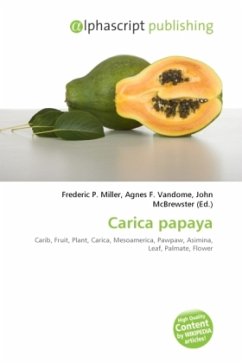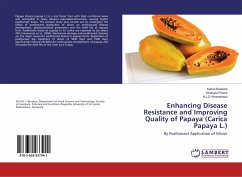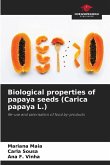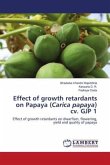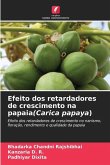High Quality Content by WIKIPEDIA articles! The papaya (from Carib via Spanish) is the fruit of the plant Carica papaya, in the genus Carica. It is native to the tropics of the Americas, and was first cultivated in Mexico several centuries before the emergence of the Mesoamerican classic cultures. It is often called a "paw paw" or a "big melon" but the North American pawpaw is a different species, in the genus Asimina. It is a large tree-like plant, with a single stem growing from 5 to 10 metres (16 to 33 ft) tall, with spirally arranged leaves confined to the top of the trunk. The lower trunk is conspicuously scarred where leaves and fruit were borne. The leaves are large, 50 70 centimetres (20 28 in) diameter, deeply palmately lobed with 7 lobes. The tree is usually unbranched if unlopped. The flowers are similar in shape to the flowers of the Plumeria but are much smaller and wax-like. They appear on the axils of the leaves, maturing into the large 15 45 centimetres (5.9 18 in) long, 10 30 centimetres (3.9 12 in) diameter fruit.

